-
 Ensuring Brand Consistency in Custom Apparel: A Guide for Businesses
Ensuring Brand Consistency in Custom Apparel: A Guide for BusinessesIn the current challenging clothing industry, your brand is not only what you claim, but people’s perception about your brand matters a lot. Every inch of your apparel from logo positioning to fabric selection represents your business.
In this guide, I will explain how to maintain brand consistency across all custom garments. While doing so we’ll also make sure that the products look professional, feel harmonious, and durable as well as have an impact after use.

1) What is Brand Consistency, and why does it matter in Apparel?
“Brand consistency means maintaining the same styling and messaging visuals across all platforms and products, including the logo, colour scheme, typography, and tone of voice.”
A unified brand identity allows customers to know what to expect every time they engage with your products. Moreover, studies in neurobranding suggest that it takes just 400 milliseconds for a first impression through visual branding.
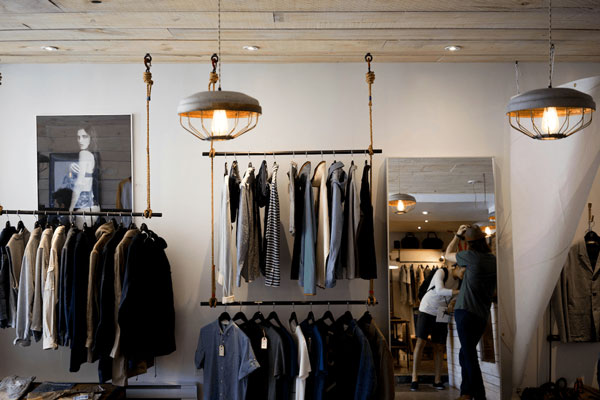
Why is consistent branding important in apparel?
Clothing as a Touchpoint Marketing: Well! Apparel isn’t merely a product to buy; however critical to note that it embodies history, representing a company physically over some time. However, you have to make constant changes to the logo, fit, or fabric style. It will dilute your brand’s impact and create confusion for clients.
Builds Trust and Recognition: Moreover, as customers recognise your brand due to consistency in the clothing's design elements as well as the packaging, they begin to trust it. This is essential for B2B buyers and fashion retailers who value reliability when placing repeat orders or establishing long-term partnerships.
Supports Scalable and Customizable Production: Last but not least, for custom shops or trading companies, sustaining uniformity within small or diverse orders helps scale efficiently. Clear branding guidelines help reduce production mistakes, streamline turnaround times, enhance satisfaction levels, and boost customer retention.
2) 6 Tips to Ensure Brand Consistency in Custom Apparel
Your brand image plays a crucial role in how people perceive it. In this scetion, I’m going to suggest to you some smart tips that will help maintain consistency across every product you create.
Tip #1: Stick to Your Brand Colours and Logo Specifications
As already discussed, everyone recognises a business by its branding logo. So, what do you think about the logo? Well, it's your brand’s face, and new customers first notice the colours whether it's your products, websites, or tags.
For instance, if you sold two blue jackets made under the same brand, but their blue shades are different, then your brands look unreliable. So, you must have to use exact colour codes like Pantone ( a universal colouring system used in textile printing), CMYK ( Cyan, Magenta, Yellow, Black-uses in ink printing) or RGB (Red, Green, Blue- used on screens) colour schemes.
Also, ensure logos always remain in predesignated spots at designated sizes relative to the surroundings. These are little things, but if left unnoticed, they can cause drastic effects on your brand’s image.
Tip #2: Choose the Right Fabric to Match Your Brand’s Feel
Additionally, your selection of materials also reflects the ethos of your brand. For example, a high-end label would opt for premium cotton or wool. In contrast, an eco-friendly brand is likely to prefer recycled or organic fabrics. These decisions help consumers make sense of your brand values, even before donning the apparel.
Thus, if you’re showing you’re an eco-friendly brand and thus using the same fabric across all your products, then this uniformity in fabric selection enhances affinity towards products. Thus, giving customers a consistent good experience each time.

Tip #3: Maintain Consistent Typography and Messaging
Also, Typography ( styling of words like font, size, colour) and messaging ( words and letters describing particular things) are important. Here, the point to be noted is that spelling out statements using various fonts and sizes will only serve to confuse rather than bring order.
So, whether it’s care labels or packing boxes, all should be uniform without differing, as they all represent a company’s name.
Let’s take an example for better understanding! Suppose your brand portrays bold modern elements. Then match it with clean, sharp wording yielding desired effects. Alternatively, if you take softer approaches, then your brand style and messaging must be like giving calm, classy, yet equally polished vibes. Clear!
Tip #4: Guarantee Quality and Suitability Align with Your Brand Principles
Furthermore, people will perceive everything about your brand based on the feel and fit of your clothes. It’s a Universal fact that even the best designs are rendered useless if there is poor construction or inaccurate sizing.
For example, as a luxury suit company, the finishing must be structured, tailored, and crisp. If you offer casual or sportswear, the priorities shift to comfort and flexibility. If one shirt is sized correctly, they will expect the same for subsequent shirts. This cultivates trust, which is very important while managing bulk orders alongside small ones.
Tip #5: Use a Trusted Custom Apparel Partner
A great design loses its value when a vendor misfollows instructions when creating a garment piece. That’s why you should work with a partner who understands branding, not just how to sew or print. But they should get all-in-one jobs right, i.e., matching colours and fabrics and following guidelines every single time without fail.
So, I would recommend asking for digital mockups, fabric swatches, and regular updates during production so that everything runs smoothly and prevents expensive blunders from happening.
At KuteTailor, we understand the varying needs of your fashion brand, trading company, or design business with our tailored methods. Whether it’s formal custom wear, casual dresses, or women’s apparel, we have you covered.
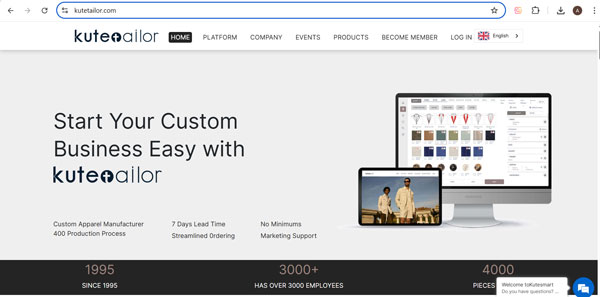
Tip #6: Document and Standardise Apparel Branding
Every brand has its dos and don’ts on how to present itself, which are called rules in brand governance. These vary from every fabric selection to logo placement, thus contributing to building this guide.
Therefore, brand guides need to be comprehensive so they’re easy to follow, like outlining approved colours alongside text formatting for colour schemes and typography ratios, font choices, as well as logo size and placement. Thus, if you’re running a fashion business and working with multiple store vendors or franchises, then these comprehensive guidelines enable standardisation across regions.
3) From Consistency to Authenticity: The Next Step for Your Brand
Brand consistency “is the starting point”; customers can easily recognise, trust, and remember you. However, in today’s markets, trust alone is not sufficient. People now want more than just a shiny logo; they want something that they believe in. This is where authenticity crosses over as your next big leap.
Now that you have established visual branding through logos, fabric,s and fit, ask yourself:
· Do your materials reflect your values?
· Does your design say something about who you are?
· Do your products make clients proud wearing them?
If one claims eco-consciousness as a selling point, then their apparel needs to embody organic or recycled materials. These statements should be actionable instead of mere words meant for marketing slogans. The agreement of what you speak and the actions you take is what gives rise to authenticity. Got it!
Thus, a brand needs a production partner to gain a deeper understanding of brand perception beyond fabric and fit in order to achieve authenticity, as opposed to consistency. This explains why numerous fashion enterprises select Kutetailor- a custom apparel manufacturer.
Final Verdict
From all above discussion, we have reached to conclusion that brand’s concistency plays an important role in building trust among clients. Whether you’re running custom apparel business or any other unifromity across every product help people remember your brand, thus chances of reppetiove buying contributing to revenue increase.
However, among all, finding a trusted production partener is equally importent. So, look no furthur than Kutetailor. We as a custom apparel manufacturer have years of experiebce in the production line custom clothing for both men and women.
We support your efforts not only towards making consistent clothing but also curating collections that illustrate the narrative of your brand—be it sustainability, graceful elegance, or audacious boldness. So, visit us now
MORE 2025-07-04 -
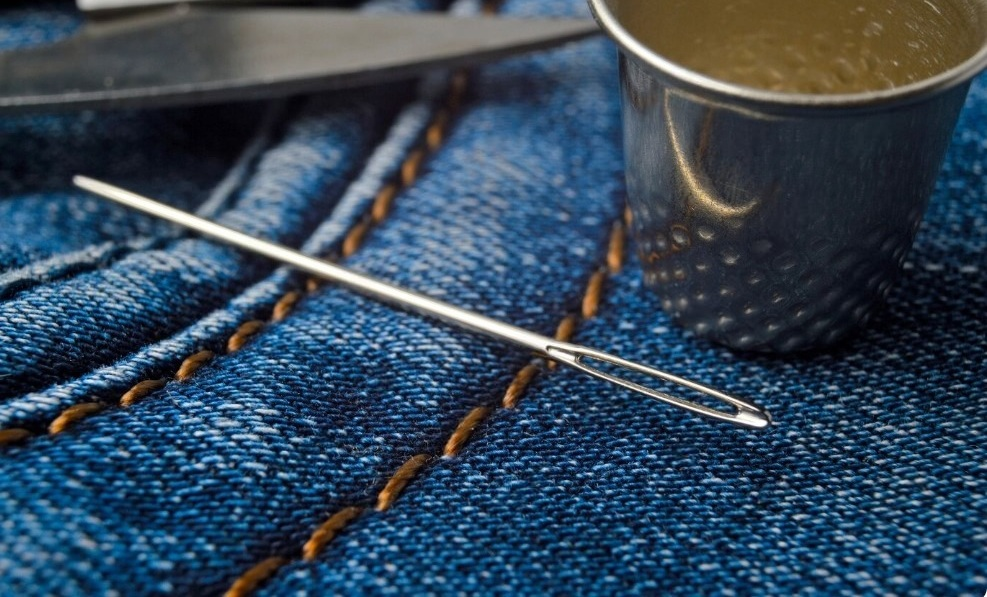 Selvage Denim: Why It’s the Best Choice for Custom Jeans
Selvage Denim: Why It’s the Best Choice for Custom JeansWhen it comes to creating custom jeans that are durable, comfortable, and unique, the choice of fabric plays a pivotal role. Among the various fabric options, selvage denim stands out as a premium choice for those who demand the best in quality and craftsmanship. Unlike regular denim, selvage denim is woven using traditional shuttle looms, giving it a distinctive edge and a higher level of durability. This article explores what selvage denim is, its advantages for custom jeans, and why it should be the fabric of choice for anyone looking to invest in high-quality, custom-made denim.
What is Selvage Denim?
Definition
Selvage denim refers to denim fabric woven on a traditional shuttle loom that creates a self-finished edge, known as the "selvage" edge. This edge is tightly woven, which prevents it from fraying, ensuring the longevity of the fabric. Selvage denim is known for its superior craftsmanship and durability, making it a popular choice for high-end, custom jeans.
History
The origins of selvage denim date back to the 19th century when it was first created by shuttle looms. Unlike modern looms, shuttle looms produce narrower rolls of denim with finished edges, resulting in cleaner seams and a more durable fabric. Over time, selvage denim became synonymous with premium, handcrafted denim products, especially in the era before mass production took over. Today, selvage denim remains a staple in high-quality denim production.
Difference from Regular Denim
The primary difference between selvage denim and regular denim is the production method. While selvage denim is made using a shuttle loom that produces a clean, tightly woven edge, regular denim is often woven on a projectile loom, which results in frayed edges. This difference in weaving techniques gives selvage denim its distinct edge and high-end quality.
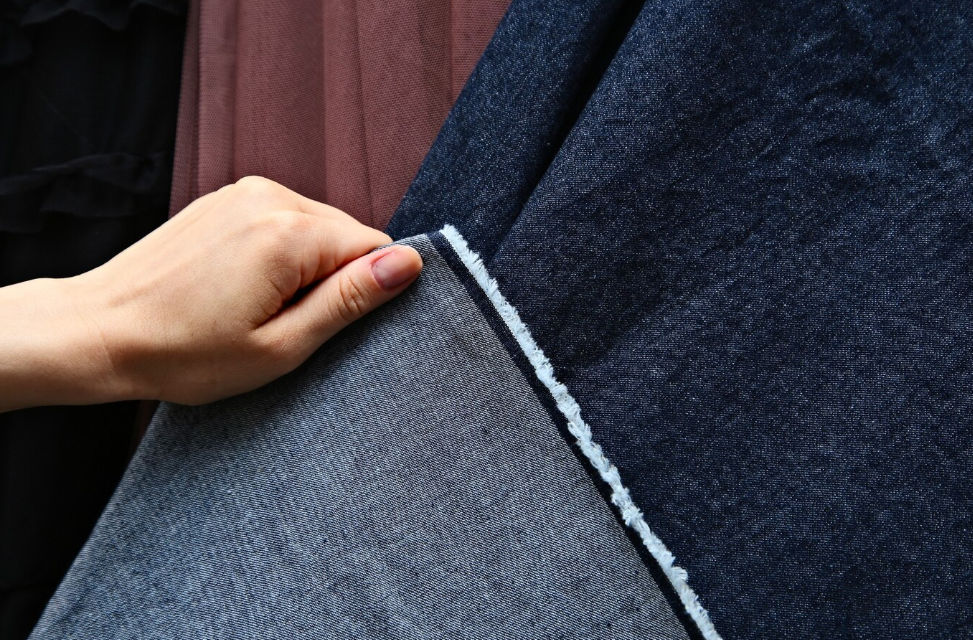
The Advantages of Selvage Denim for Custom Jeans
Unique Edge Design
The self-edge design of selvage denim is one of its most distinctive features. The tightly woven edges enhance the durability of the fabric, ensuring the jeans' longevity. This design also adds to the aesthetic appeal, as the raw edges are often visible on the inside of the jeans, showcasing the craftsmanship involved.
Durability
Selvage denim is more durable than regular denim because of its dense weave and strong edges. This makes it ideal for custom jeans, as it can withstand regular wear and tear, ensuring a longer lifespan compared to jeans made from regular denim.
Comfort
Despite its sturdy nature, selvage denim offers excellent comfort. The fabric softens over time, molding to the wearer's body for a personalized fit. This makes it particularly appealing for custom jeans, where comfort is key.
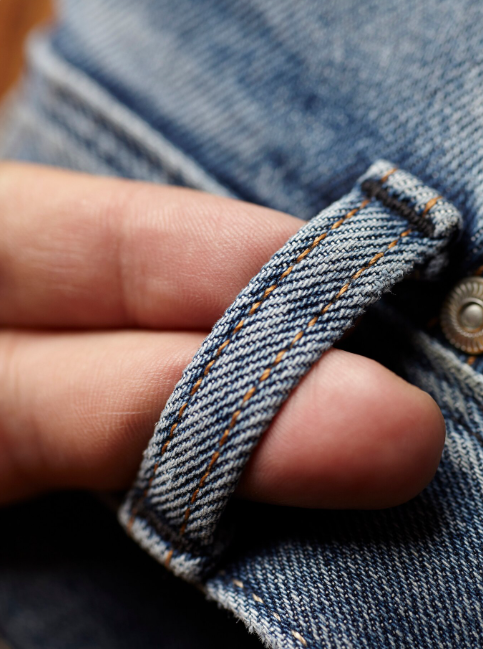
Why Selvage Denim is Ideal for Custom Jeans
Perfect Fit
Because of its high quality and rigidity, selvage denim helps create perfectly fitted custom jeans that are tailored to the customer’s body. The durability ensures that the jeans retain their shape over time, even after multiple washes, making them ideal for customers who want a long-lasting, well-fitted product.
Premium Look and Feel
The unique edge and high-quality finish of selvage denim give custom jeans a sophisticated, premium look that is difficult to achieve with regular denim. This adds a level of refinement and exclusivity to each pair of jeans.
Personalization
One of the key benefits of using selvage denim for custom jeans is the ability to personalize every detail. From the perfect fit to the selection of color, wash, and finish, selvage denim allows customers to create jeans that are uniquely their own, ensuring no two pairs are alike.
The Difference Between Selvage Denim and Regular Denim
Manufacturing Process
Feature Selvage Denim Regular Denim Weaving Method Shuttle loom, creates a self-finished edge (selvage) Projectile loom, frayed edges Fabric Quality Denser, more durable fabric Lighter, less durable fabric Edge Finish Tightly woven, clean edge Unfinished, raw edges Visual Differences
Selvage denim’s distinctive self-edge design gives custom jeans a clean, finished look, making them stand out with a premium appearance. Regular denim lacks this distinctive edge and often appears less refined in comparison.
Price vs. Value
Selvage denim tends to be more expensive due to the slower, more intricate production process. However, its durability, quality, and unique design justify the higher cost. When compared to regular denim, selvage denim offers better long-term value for custom jeans.
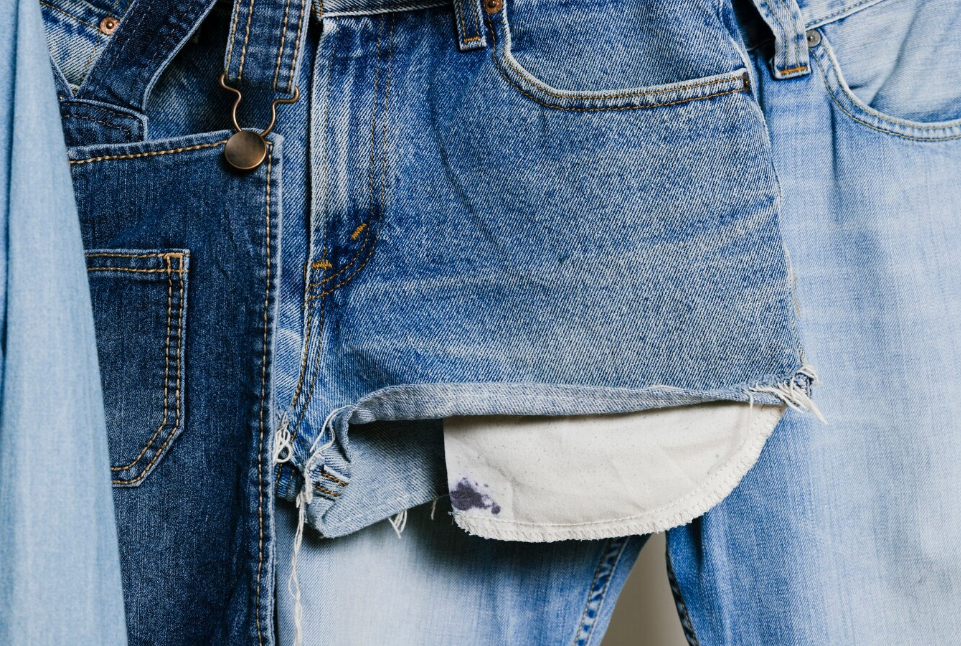
How to Choose the Right Selvage Denim for Custom Jeans
Fabric Thickness and Texture
Choosing the right thickness and texture of selvage denim depends on the desired look and feel. Lighter denim is ideal for summer jeans, while heavyweight denim is perfect for winter jeans that need added warmth and durability.
Color and Style
Selecting the right color, wash, and style of selvage denim is essential for creating the perfect custom jeans. Whether you prefer a raw, unwashed look or a faded, pre-washed design, the possibilities are endless.
Details and Finishing
When creating custom jeans or custom formal wear, it’s essential to incorporate the right stitching, buttons, and design elements. Opt for unique finishes like contrast stitching or copper rivets to enhance the overall look of your custom jeans. For formal wear, sleek details like matte or polished metal buttons and understated stitching will add a subtle touch of elegance, ensuring the jeans or pants maintain their formal appeal without sacrificing comfort.
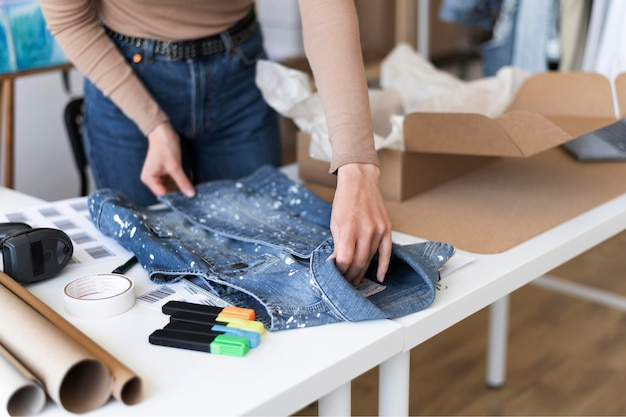
Sustainability and Environmental Impact of Selvage Denim
Environmental Benefits
The production of selvage denim typically results in less waste compared to regular denim, as it is made with a more traditional and sustainable weaving process. Additionally, selvage denim tends to last longer, reducing the need for frequent replacements.
Comparison with Fast Fashion
In comparison to fast fashion denim, selvage denim is a more eco-friendly option. It’s produced using fewer chemicals and less energy, making it a more sustainable choice for environmentally conscious consumers.
Conclusion: Why Selvage Denim is the Best Choice for Custom Jeans
Selvage denim offers the perfect combination of durability, comfort, and premium appearance, making it the ideal fabric for custom jeans. Whether you’re a custom apparel manufacturer seeking to create a unique fit or a consumer looking for personalized design, selvage denim ensures high-quality craftsmanship and long-lasting wear. Additionally, its sustainable production process makes it an eco-friendly choice, offering a refined and durable alternative to regular denim. For manufacturers and designers, choosing selvage denim allows you to deliver a product that not only meets the demand for quality but also elevates the overall customer experience.
FAQs
Is Selvage Denim More Expensive than Regular Denim?
Yes, selvage denim is generally more expensive than regular denim due to the more labor-intensive production process and higher quality of the fabric. The use of traditional shuttle looms, which produce the tight self-edge, results in higher production costs, but the long-lasting durability and unique qualities make it worth the investment for custom jeans.
How Do I Care for Selvage Denim Jeans?
Caring for selvage denim involves a few key steps:
· Washing: Wash selvage denim less frequently to preserve its structure. When washing, turn the jeans inside out to prevent fading.
· Drying: Air-dry your jeans to prevent shrinking and maintain their shape.
· Breaking In: Selvage denim tends to soften over time as it molds to your body, so wear them regularly to break them in.
Can Selvage Denim Be Used for All Types of Custom Jeans?
Yes, selvage denim can be used for a wide range of custom jeans styles, from classic straight-leg jeans to more fashion-forward skinny or tapered fits. Its versatile nature makes it an excellent choice for any custom jeans, as it provides a durable, high-quality fabric that molds to different cuts and styles.
Is Selvage Denim Environmentally Friendly?
Yes, selvage denim is more environmentally friendly than mass-produced denim. The production process is more sustainable, as it uses less energy and results in less waste. Additionally, selvage denim tends to last longer, which reduces the need for frequent replacements. Choosing selvage denim is a more eco-conscious choice compared to fast fashion alternatives.
Can I Use Selvage Denim for Other Clothing Items Besides Jeans?
Absolutely! While selvage denim is most commonly used for jeans, it can also be used for other custom clothing items such as jackets, skirts, and even accessories like bags or aprons. The durability and unique look of selvage denim make it a great option for creating high-quality, long-lasting apparel beyond just jeans.
MORE 2025-07-03 -
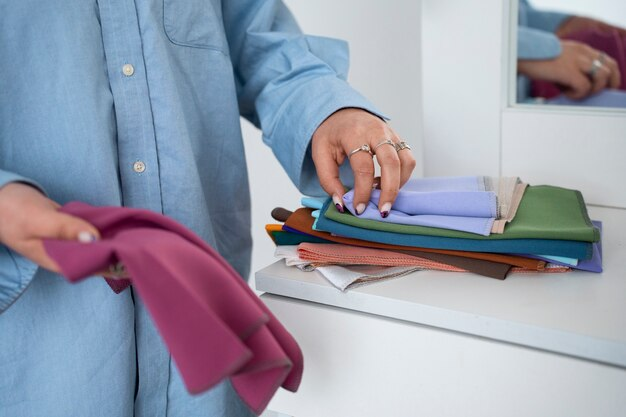 Eco-Friendly Fabric Guide: Best Materials for Custom Apparel
Eco-Friendly Fabric Guide: Best Materials for Custom ApparelAs sustainability reshapes the fashion industry, more brands are rethinking their material choices, especially in the custom apparel space. From startups to established labels, eco-conscious clothing is no longer a niche trend but a business imperative. Whether you're designing made-to-order pieces or launching a full clothing line, understanding what materials are environmentally friendly is the first step toward building a responsible, future-proof brand. This guide explores the most popular eco-friendly fabrics for clothing, how to assess their true sustainability, and how they fit into a modern apparel business.
Why Sustainable Fabrics Matter in Custom Apparel
In today’s fashion landscape, sustainable fashion materials are no longer optional—they are essential. Consumers are increasingly aware of the environmental impact of clothing production and are demanding transparency and responsibility from brands. For custom apparel makers, incorporating eco-friendly clothing materials is not just about ethics; it’s a strategic move to align with market expectations, elevate brand value, and differentiate in a crowded space.
Conventional fabrics such as traditional cotton and polyester come with high environmental costs. From excessive water use in cotton farming to the carbon footprint of synthetic fiber production, the clothing industry has long been a top contributor to pollution and waste. In contrast, switching to eco-friendly fabrics for clothing reduces greenhouse gas emissions, preserves water resources, and promotes biodiversity.
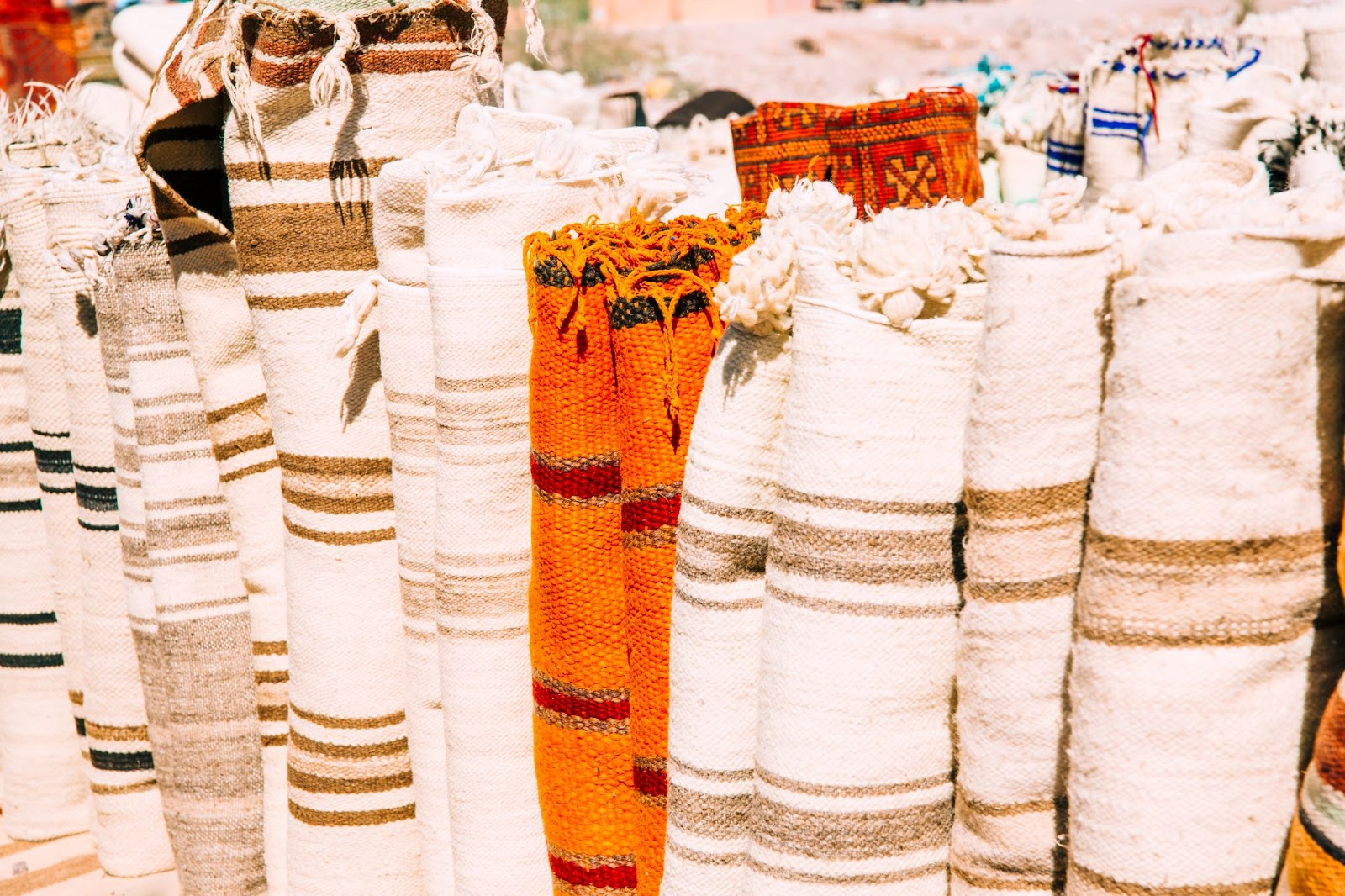
What Makes a Fabric Eco-Friendly?
Not all "green" claims are created equal. To truly qualify as eco-friendly textile materials, fabrics must meet several criteria:
· Sustainable Sourcing: Raw materials should be grown or harvested using organic farming practices, renewable resources, or recycling methods.
· Low-Impact Processing: Production should minimize energy consumption, water use, and chemical inputs. Eco-friendly fabric clothing is often dyed using non-toxic, water-efficient methods.
· Durability and Biodegradability: The longer a garment lasts, the less often it needs to be replaced. Biodegradable materials reduce landfill waste at the end of a garment's life.
· Certifications: Look for labels such as GOTS (Global Organic Textile Standard), OEKO-TEX®, Bluesign®, and GRS (Global Recycled Standard) to confirm a fabric’s sustainability credentials.
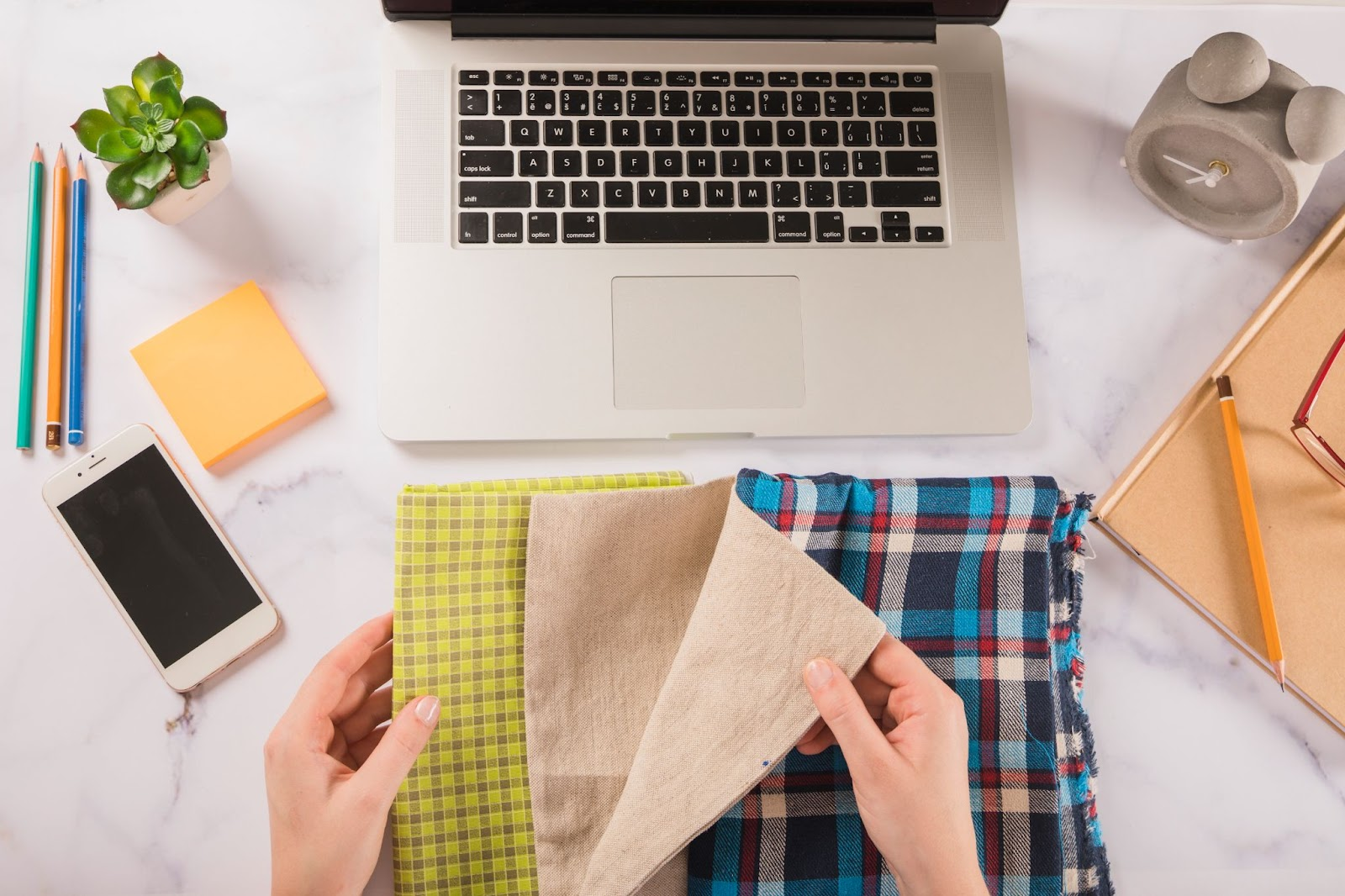
How to Identify Truly Eco-Friendly Fabrics
Understanding labels and supplier claims is critical when sourcing sustainable materials for clothing. Here’s how to distinguish genuinely eco-friendly fabrics from marketing hype:
Look for Certified Sustainability Labels
o GOTS: Verifies organic content and responsible manufacturing.
o OEKO-TEX®: Ensures the fabric is free from harmful chemicals.
o Bluesign®: Confirms safe and resource-efficient processes.
o GRS: Validates the use of recycled materials.
Ask About the Supply Chain
o Where is the material sourced?
o Are fair labor and environmental practices upheld?
o Is the fiber grown locally to reduce transport emissions?
Investigate Processing Methods
o Fabrics that use closed-loop processing, enzyme-based finishing, or waterless dyeing are preferable.
o Be cautious with bamboo and viscose, which may sound sustainable but often involve toxic chemical processing.
Verify Supplier Claims
o Request technical data sheets, test reports, and certification documents.
o Be skeptical of vague claims like "eco" or "natural" without verification.
Consider End-of-Life Impact
o Is the fabric biodegradable, compostable, or recyclable?
o Does it break down safely or release microplastics?
Top Eco-Friendly Fabrics for Custom Clothing
Fabric Type Raw Source Certifications Ideal Use Cases Key Benefits Organic Cotton Organic cotton GOTS T-shirts, babywear Breathable, soft, pesticide-free Recycled Polyester PET bottles GRS Activewear, jackets Strong, moisture-wicking Hemp Hemp plant Organic/Natural Casual, eco-luxury wear Durable, low water use, pest-free TENCEL(Lyocell) Wood pulp FSC, OEKO-TEX Dresses, basics, yoga Biodegradable, soft, closed-loop Bamboo Lyocell Bamboo OEKO-TEX, FSC Undergarments, loungewear Ultra-soft, breathable Organic Cotton
A popular eco-friendly clothing material, organic cotton is known for comfort and purity. Ideal for essentials and babywear.
Recycled Polyester (rPET)
Derived from plastic bottles, this fabric supports recycling and is perfect for moisture-wicking apparel.
Hemp
Naturally pest-resistant and water-efficient, hemp offers rugged durability and breathability for modern clothing.
TENCEL™ (Lyocell)
Made using a closed-loop process, TENCEL is soft, sustainable, and perfect for both casual and performance garments.
Bamboo Lyocell
Mechanically processed bamboo yields ultra-soft, breathable fabric ideal for intimate wear and loungewear.
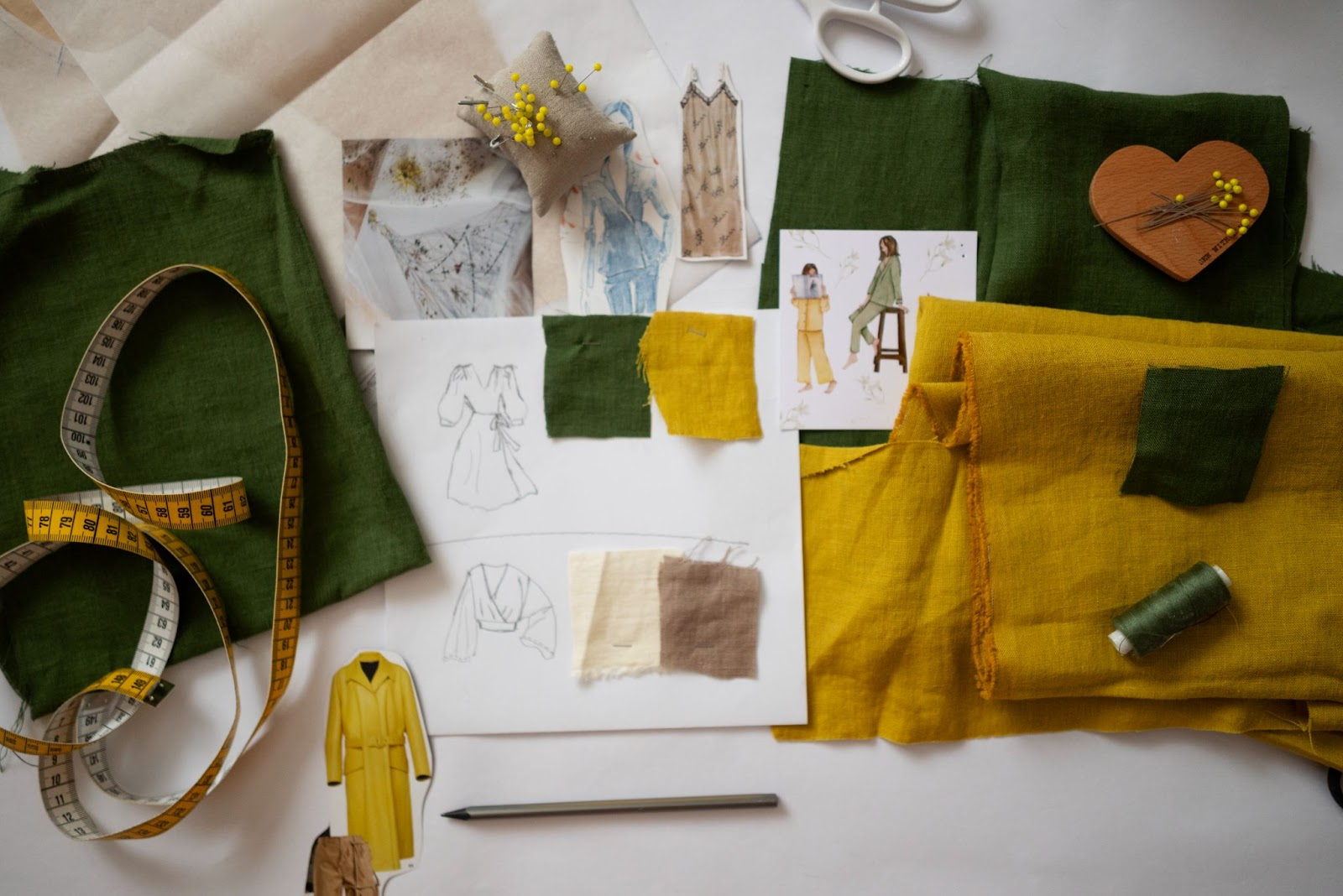
Common Misconceptions About Eco Fabrics
Despite growing awareness of sustainable fashion, several myths continue to cloud decision-making for both consumers and apparel brands. Here are a few common misconceptions—and the facts that challenge them:
“Eco-friendly fabrics are always more expensive.”
While it’s true that some sustainable materials come with higher upfront costs due to ethical sourcing and certification, they often offer better long-term value. Their superior durability can reduce replacement cycles, while their reduced environmental footprint may also help brands avoid future regulatory penalties or reputational risks.“Organic cotton is always the best choice.”
Organic cotton is widely celebrated, but it’s not a one-size-fits-all solution. It still requires significant water resources and may not be ideal for all garment types. In many cases, alternatives like hemp, which requires less water and grows faster, or TENCEL™, which uses closed-loop processing, offer a more sustainable profile for certain applications.“Recycled fabrics are low quality.”
This myth stems from early iterations of recycled polyester and other repurposed fibers, which sometimes lacked consistency. Today, modern technologies allow recycled fabrics to meet—and even exceed—the performance, feel, and appearance of virgin materials. Many leading sportswear and luxury brands now integrate high-grade recycled materials seamlessly into their collections.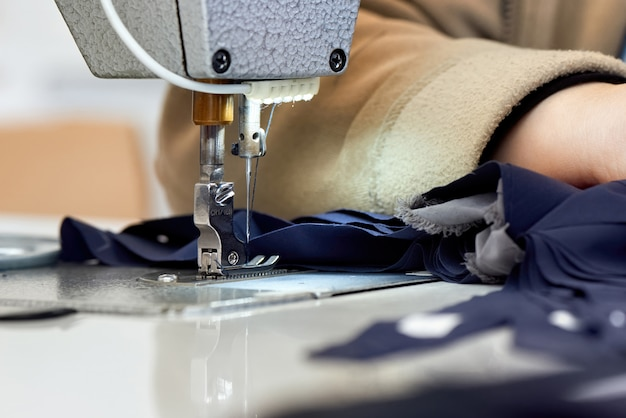
How to Choose the Right Sustainable Fabric for Your Apparel Line
When selecting eco-friendly textile materials for your custom clothing line, it’s important to take a strategic and holistic approach. Whether you're an independent designer or working with custom clothing manufacturers, the fabric you choose must align with your design intent, customer expectations, and production capabilities. Here are several key considerations:
· Fabric Function vs. Garment Type
Choose materials that suit the purpose of the garment. For instance, activewear requires moisture-wicking and stretch; outerwear may need durability and wind resistance; undergarments need softness and breathability.· Feel and Aesthetics
Texture, drape, sheen, and color absorption vary widely among sustainable fabrics. Hemp has a rustic texture, while TENCEL™ is luxuriously smooth. Match the material's look and feel to your brand style and customer preferences.· MOQ and Cost
Understand your production scale. Some eco-fabrics require high minimum order quantities (MOQs), while others are available for small-batch or made-to-order operations. Balance cost-effectiveness with sustainability goals.· Supplier Reputation
Work with suppliers who offer full transparency in their sourcing and manufacturing practices. Request certifications, audit reports, or third-party verifications. A reliable supplier should be able to demonstrate ethical labor practices and environmental responsibility.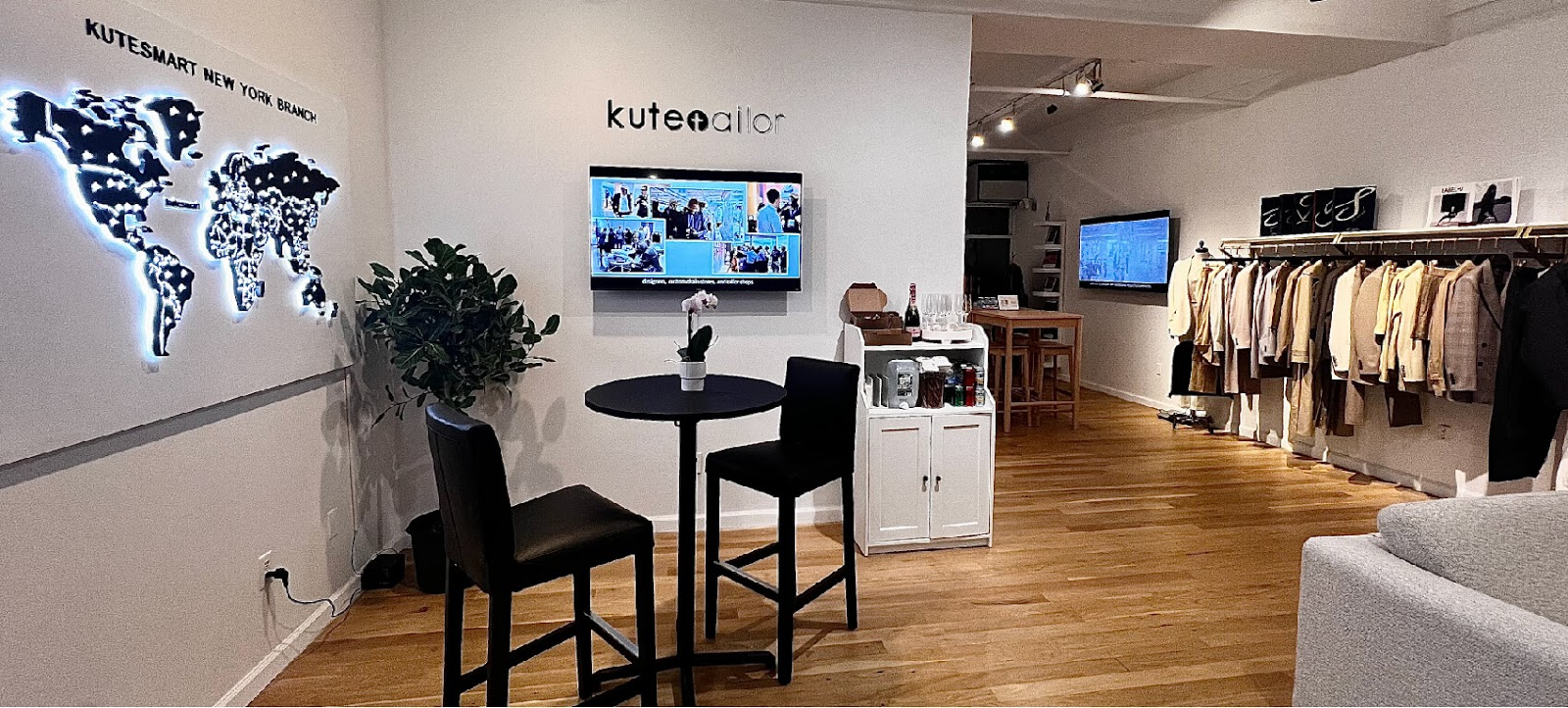
Emerging Trends in Sustainable Fabric Technology
The world of sustainable fashion is evolving quickly, with cutting-edge innovations reshaping how materials are designed, tracked, and reused. Here are some of the most promising developments to watch:
Bio-Based Textiles
These fabrics are created from renewable biological sources like seaweed, orange peels, corn, or algae. Examples include SeaCell™ (seaweed-based fiber), Orange Fiber (derived from citrus waste), and Bananatex®. They reduce dependency on fossil fuels and often biodegrade more easily than their synthetic counterparts.Smart Eco-Fabrics
These are sustainable materials enhanced with functional properties such as temperature regulation, moisture management, or antibacterial effects. For instance, some fabrics are infused with natural minerals or plant-based treatments that reduce odor or adjust to body heat, ideal for performance wear.Blockchain Traceability
To combat greenwashing, some brands are adopting blockchain technology to offer transparent, tamper-proof tracking of each step in the supply chain. Customers can verify where the fabric was sourced, how it was processed, and whether fair labor standards were upheld.Circular Design
Instead of planning for disposal, circular fashion considers what happens to a product at end-of-life. Fabrics are now being engineered to be easily disassembled, recycled into new yarns, or composted without harming the environment—creating a closed-loop system that minimizes waste.Frequently Asked Questions
Q1: Which eco-friendly fabric is best for activewear?
TENCEL™ and recycled polyester (rPET) are excellent options. TENCEL offers natural breathability, moisture control, and a soft feel, making it ideal for yoga and casual activewear. rPET is more suitable for high-performance or technical garments due to its strength and moisture-wicking ability. Blended fabrics combining both are also gaining popularity.Q2: Are sustainable fabrics machine-washable?
Yes—most eco-friendly fabrics are just as durable and washable as conventional ones. For example, organic cotton, hemp, and TENCEL can handle regular laundering. However, always follow care label instructions to maintain longevity, and consider using laundry bags for recycled polyester to reduce microplastic shedding.Q3: How do I verify a supplier’s sustainability claims?
Ask for official certifications like GOTS, OEKO-TEX®, Bluesign®, or GRS. Reputable suppliers should also be able to provide technical data sheets (TDS), audit reports, or environmental compliance documents. Transparency is key—be cautious of vague or unsubstantiated eco-friendly claims.Q4: Can small brands afford to use sustainable materials?
Absolutely. Many fabric suppliers now offer low-MOQ (minimum order quantity) options to support emerging brands. Starting with a capsule collection, using deadstock fabrics, or sourcing from certified small-batch mills can all reduce upfront investment while still aligning with sustainable values.MORE 2025-07-02 -
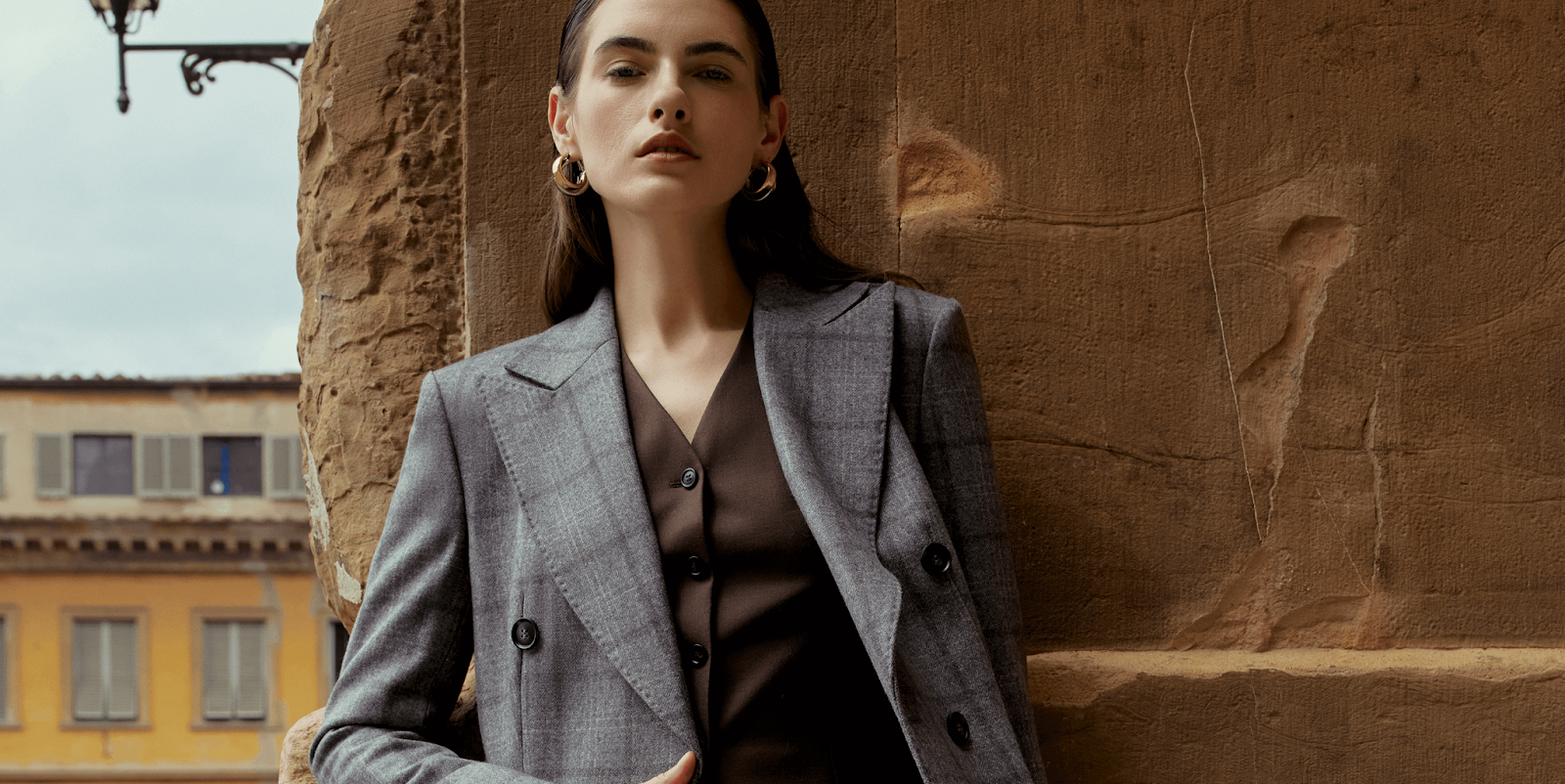 The Ultimate Guide to Clothing Photography: Capturing Stunning Apparel Shots
The Ultimate Guide to Clothing Photography: Capturing Stunning Apparel ShotsIn today’s fast-paced digital world, your clothing brand’s first impression often starts with an image. Whether you're selling apparel online or curating a fashion portfolio, high-quality clothing photography is no longer optional—it’s essential. This guide breaks down everything you need to know about photographing clothing, from gear and lighting to creative styling and post-production.
Why Clothing Photography Matters
Images do more than show a product—they build trust, convey quality, and shape brand perception. According to industry research, high-quality product photos can increase e-commerce conversions by up to 30% and drastically reduce return rates.
But beyond e-commerce, great clothing photography serves many roles:
· Storytelling: It visually defines your brand identity—minimalist, edgy, vintage, etc.
· Platform versatility: One shoot can produce images for your website, ads, email campaigns, and social media content.
· Emotional connection: Lifestyle and detail shots help customers imagine themselves in your clothes, creating aspirational appeal.
Essential Equipment for Clothing Photography
You don’t need a Hollywood budget to take stunning clothing photos, but the right tools make a difference. Here’s what you’ll need:
· Camera and Lenses: A DSLR or mirrorless camera with at least 16 megapixels is ideal for sharp, detailed shots. For beginners, a modern smartphone with a high-resolution camera can work wonders. Pair it with a 50mm or 85mm lens for crisp focus and a flattering depth of field.
· Lighting: Soft, diffused light is your best friend to avoid harsh shadows. Invest in a softbox or ring light for consistent results, or use natural light from a window for budget setups. Two lights positioned at 45-degree angles work well for most shots.
· Backdrop: A seamless white or light gray backdrop keeps the focus on the clothing and is perfect for e-commerce. For lifestyle shots, try textured or colored backdrops like wood or brick.
· Mannequins or Models: Mannequins offer consistency and are great for the “invisible hanger” effect, while models bring life and context to your shots. Choose based on your brand’s needs.
· Additional Tools: A sturdy tripod prevents shaky shots, reflectors bounce light to fill shadows, and clamps or tape help secure flat-lay setups.
Setting Up Your Clothing Photography Studio
You don’t need a fancy studio to get started—any clean, well-lit space will do. Here’s how to set up:
· Choose Your Space: Pick a room with ample space to move around and access to natural light or power outlets. A spare bedroom or garage corner works fine.
· Prep the Clothing: Steam or iron every garment to remove wrinkles. Pin or tuck fabric to highlight fit and details, like a jacket’s collar or a skirt’s pleats.
· Set Up Lighting: For artificial light, place two softboxes at 45-degree angles to the clothing for even coverage. If using natural light, shoot near a large window with sheer curtains to diffuse harsh rays.
· Arrange the Backdrop: Hang a seamless backdrop or tape it to a wall for a clean look. For lifestyle shots, add props like plants or chairs to create a scene, but keep them subtle to avoid stealing focus.
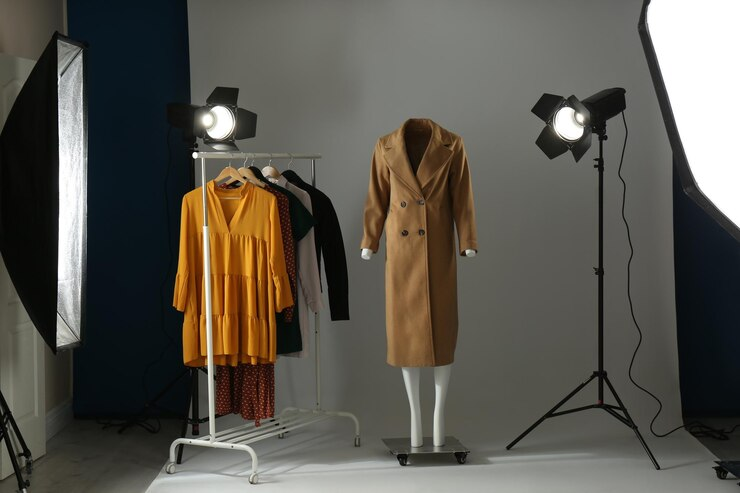
Techniques for Photographing Clothing
Once you’ve mastered the gear and setup, it’s time to bring your clothing to life through effective photography techniques. Whether you're aiming for simple product shots or expressive lifestyle images, each approach serves a purpose in building your brand’s visual language.
1. Flat-Lay Photography
Perfect for beginners and budget-conscious brands, flat-lay photography involves laying garments flat on a clean surface. Use a white foam board or seamless paper background, style the clothing symmetrically, and shoot directly overhead. This method is ideal for accessories, t-shirts, and social media content.
2. Mannequin or “Ghost Mannequin” Shots
To add a 3D sense without using live models, dress your garments on mannequins. For a high-end e-commerce look, you can create the invisible mannequin effect by photographing the item on a form and removing the mannequin in post-production. This keeps the focus entirely on fit and construction.
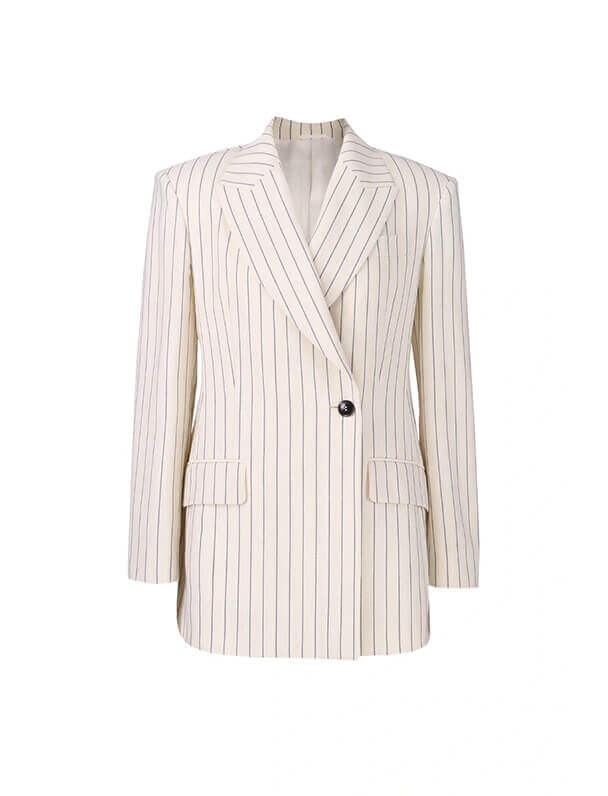
3. Model Photography
Models introduce motion, lifestyle, and relatability. Have them pose naturally—walking, sitting, or interacting with the environment—to show how the clothing moves and fits in real-life scenarios. Candid moments often feel the most authentic.
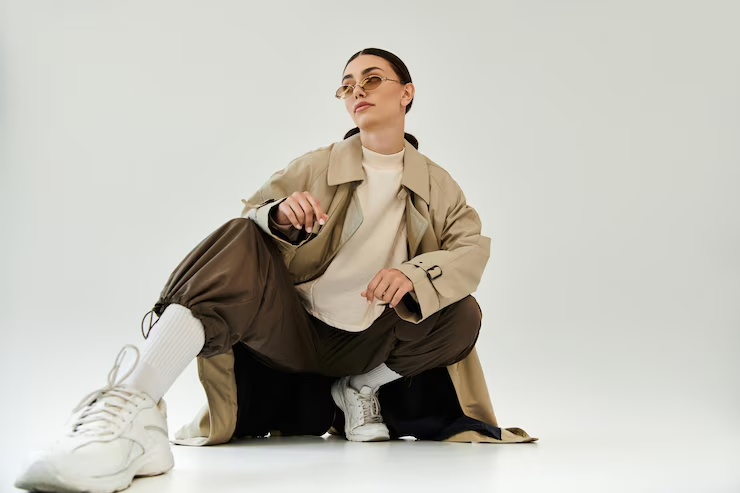
4. Motion Shots
Want to show off flowing fabrics or sporty fits? Ask your model to move—twirl, jump, or walk toward the camera. Capture in burst mode to freeze dynamic movement and add energy to your shots.
5. Hybrid Shots
A creative fusion between flat-lay and ghost mannequin techniques, hybrid photography involves hanging or lightly propping the garment and then editing out the supports. It's especially useful for structured pieces like coats or shirts, providing both shape and style.
6. 360-Degree Spins
For e-commerce sites aiming to improve customer interaction, a rotating turntable setup lets you shoot products from all angles. You can create GIFs or interactive 3D viewers that boost buyer confidence.
7. Backlit Silhouettes
To highlight the texture or transparency of fabrics like chiffon or lace, use a soft light source (like a large window or softbox) from behind the garment. This high-key effect creates an editorial feel and elevates lightweight designs.
Visual Storytelling & Branding Through Photography
Once your technical shots are ready, it’s time to align your imagery with your brand identity. Ask yourself: What emotion, lifestyle, or value do I want my audience to feel when they see this image?
· Styling props: Use chairs, bags, books, or coffee mugs sparingly to enhance a vibe without overwhelming the garment.
· Color theory: Match or contrast background and props using complementary color wheels. For example, dusty pink clothes pop against sage green backdrops.
· Model diversity: Feature models of various body types and ethnicities. Customers are more likely to convert when they see themselves represented.
If you're working with custom apparel suppliers, ensure your images reflect the uniqueness of your product line—tailored fits, personalized designs, or niche fashion touches should be visually emphasized.
Creative Clothing Photography Ideas
Stand out with photos that pop. Try these creative approaches:
· Lifestyle Shots: Place your clothing in real-world settings, like a cozy café or a sunny park, to make them relatable. A model wearing your sweater while sipping coffee tells a story that resonates.
· Detail Shots: Zoom in on unique features like embroidery, buttons, or fabric texture. These close-ups build trust by showing quality craftsmanship.
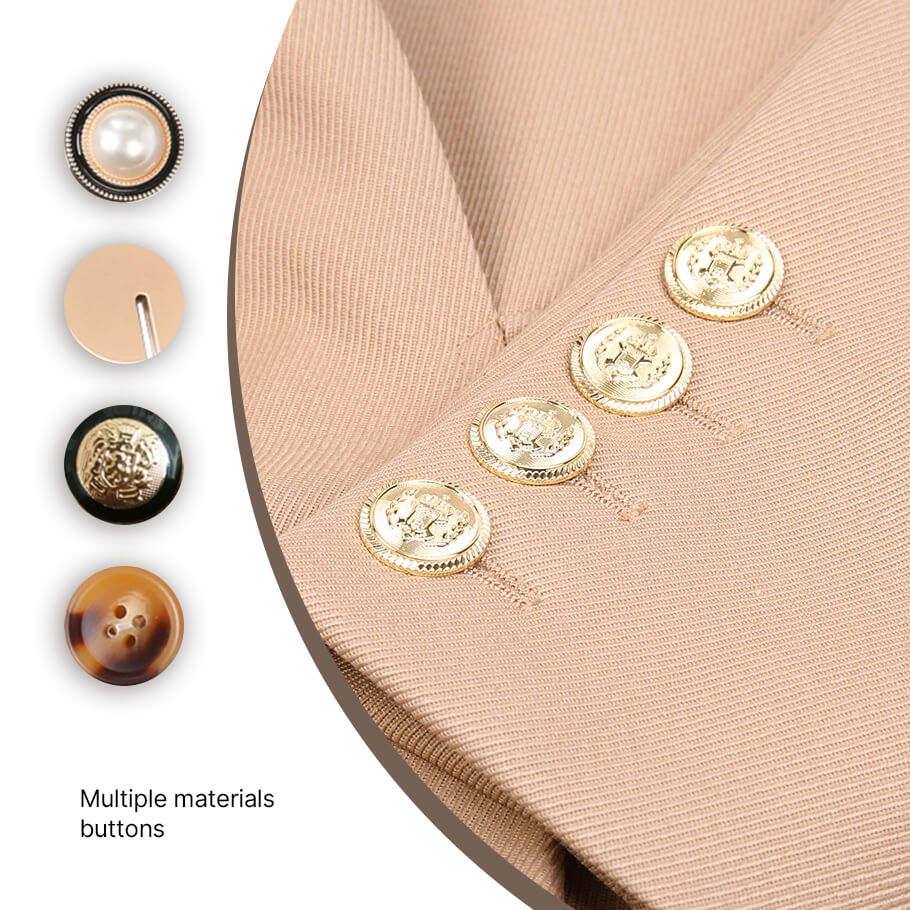
· Themed Shoots: Create a mood with seasonal or brand-specific themes. For example, a fall collection might feature warm tones and leaf-strewn backgrounds, while a minimalist brand could use stark white spaces.
· Dynamic Angles: Mix up your shots with top-down, 45-degree, or low-angle perspectives. A low-angle shot of a flowing dress can add drama.
· Color and Composition: Pair clothing with complementary backgrounds or props. A red dress against a soft green wall creates a striking contrast without overwhelming the product.
· Photography is especially important when you sell made to measure clothes online, as customers rely entirely on images to assess fit, style, and quality. Highlight details like tailored seams, fabric drape, and model measurements whenever possible.
Editing and Post-Production
Editing polishes your photos for a professional finish. Here’s how to do it right:
· Basic Adjustments: Use Adobe Lightroom, Photoshop, or free apps like Snapseed to tweak brightness, contrast, and saturation. Ensure colors match the actual garment to avoid customer complaints.
· Remove Backgrounds: For e-commerce, create a clean white or transparent background using tools like Photoshop or Canva. This keeps your product images consistent and distraction-free.
· Enhance Details: Sharpen images slightly to highlight textures, and fix minor flaws like lint or stray threads.
· Maintain Consistency: Apply the same editing preset to all photos for a cohesive look across your website or Instagram feed.
Common Mistakes to Avoid
Even pros make mistakes, but you can dodge these pitfalls:
· Poor Lighting: Harsh or uneven light creates unflattering shadows. Always diffuse your light source.
· Wrinkled Clothing: A single crease can make a product look cheap. Steam or iron every piece before shooting.
· Inconsistent Backgrounds: Varying backdrops confuse customers. Stick to one style for product shots.
· Over-Editing: Heavy filters or unrealistic edits can misrepresent the clothing, leading to returns. Keep it natural.
Conclusion
Great clothing photography isn’t about luck—it’s about preparation, experimentation, and consistency. Whether you're starting small or managing a full apparel catalog, your visual content can become your strongest sales asset.
Remember:
· Shoot in batches for efficiency.
· Plan ahead with a creative direction.
· Let your brand identity guide every choice—from angles to editing.
Ready to elevate your apparel imagery? Then grab your tripod, light up that backdrop, and start telling your brand’s story one shot at a time.
MORE 2025-06-18 -
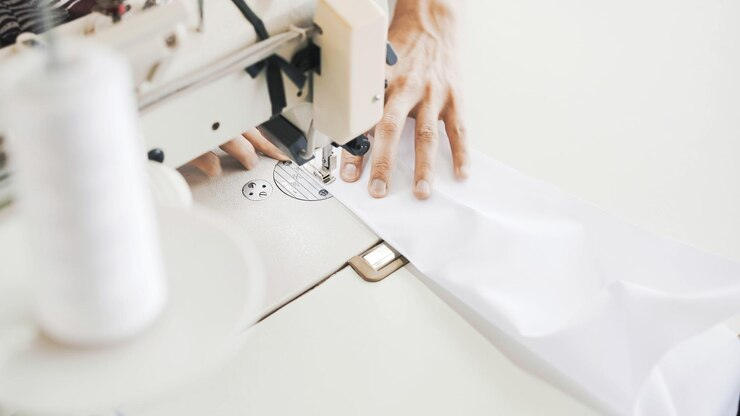 Understanding the Clothing Production Process and Timelines
Understanding the Clothing Production Process and TimelinesWhether you're launching a fashion brand or simply curious about how garments go from a sketch to store shelves, understanding the clothing production process reveals the intricate steps behind every piece we wear. From design ideation to manufacturing timelines, this guide walks you through each phase—so you can plan smarter, avoid costly delays, and bring your collection to life efficiently.
Overview of the Clothing Production Process
Fashion production is the end-to-end process of turning a designer's vision into a tangible product ready for consumers. It involves multiple stages, broadly categorized into pre-production (ideation, design, and sourcing), production (manufacturing and assembly), and post-production (quality control and distribution). Each phase requires meticulous planning to meet deadlines, maintain quality, and align with market demands. Timelines can vary widely depending on the scale of production, sourcing choices, and technological tools.
Key Stages in the Clothing Production Process
I. Ideation & Concept Development
Every great garment starts with a strong idea. In this initial phase, designers translate creative visions into workable concepts by conducting trend research, analyzing competitor lines, and building mood boards.
Once the design direction is clear, color palettes and silhouettes are established. Most importantly, a technical package (tech pack) is developed. This blueprint includes garment sketches, measurements, material specs, and construction notes. A well-prepared tech pack is essential for clear communication with manufacturers and typically takes 1–2 weeks to finalize.
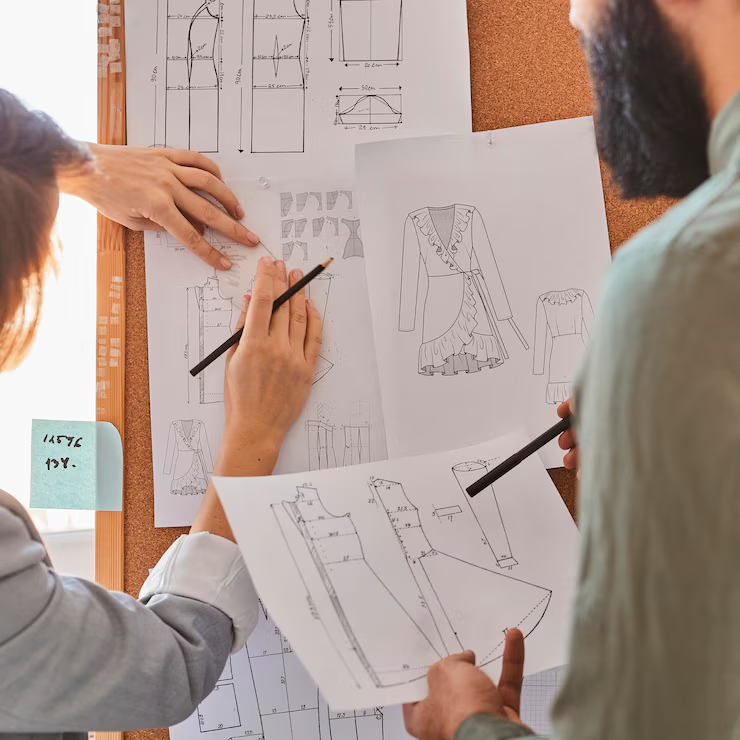
II. Sampling & Technical Design
Next comes sampling—the stage where concepts take physical form. Pattern makers interpret the tech pack to draft the first patterns, which are then used to produce the initial garment sample.
This sample undergoes multiple fit tests and revisions to refine proportions, adjust functionality, and perfect aesthetic details. It's a back-and-forth process between designers and technicians, often requiring 2–4 weeks depending on complexity. At the end of this phase, the garment is production-ready in both form and function.
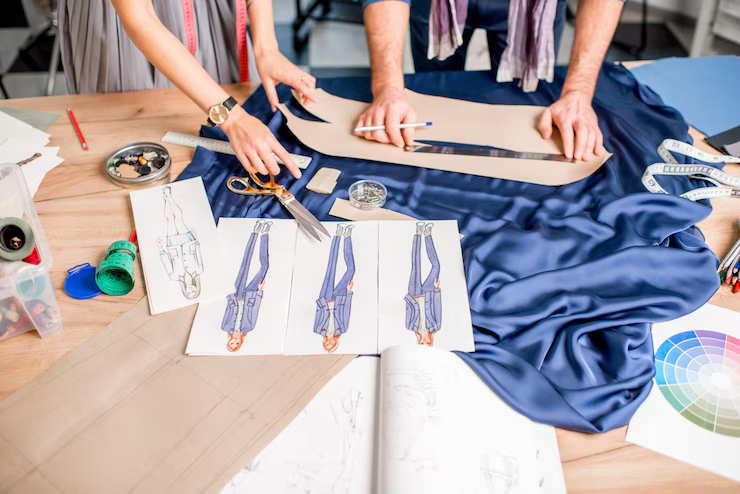
III. Sourcing & Pre-Production
Sourcing involves selecting and securing fabrics, trims, zippers, labels, and any custom hardware. For those working with custom apparel suppliers, it's essential to ensure that material specs and delivery timelines are aligned early on—delays in material delivery can derail your entire production schedule.
Suppliers are contacted, minimum order quantities (MOQs) are reviewed, and sample yardage may be tested before final orders are placed. At the same time, factories are booked for pre-production planning, which includes small-batch test runs to validate quality and workflow. This phase usually takes 1–3 weeks, though custom material sourcing can take longer.
IV. Bulk Production
Now the real manufacturing begins. After materials are received and approved, production lines kick off the bulk process:
· Cutting: Fabrics are layered and precision-cut based on approved patterns.
· Sewing: Skilled operators or semi-automated machines stitch each garment.
· Finishing: Labels, tags, and final trims are applied.
Depending on volume and factory efficiency, manufacturing timelines can range from 2 to 8 weeks, with fast fashion brands often pushing for faster outputs. Fast fashion brands may push production through in 3–4 weeks, while luxury or made-to-order items often require longer lead times.
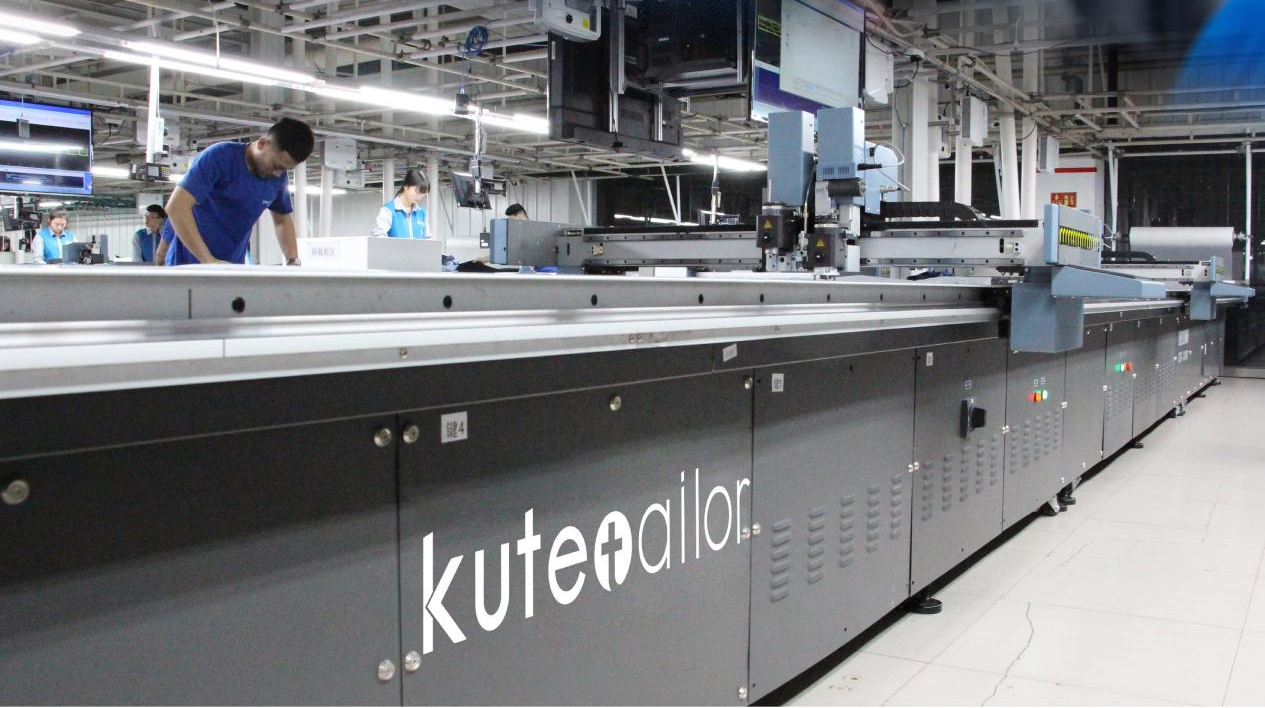
V. Quality Control & Finishing
Quality control (QC) ensures that each garment meets your brand's standards. Factories conduct inspections at multiple stages—post-cutting, post-sewing, and before packaging. Garments are checked for sizing accuracy, stitching consistency, and material defects.
Finishing touches include ironing, packaging, and sometimes special treatments like soft washing or wrinkle resistance. QC is a critical safeguard, preventing defects from reaching customers and damaging your brand.
VI. Packaging, Logistics & Distribution
Once garments pass inspection, they are folded, tagged, and packed for shipment. Packaging design must balance aesthetics, durability, and sustainability.
Shipping logistics vary depending on destination and budget—options range from sea freight (slow, affordable) to air express (fast, expensive). Upon arrival at distribution centers or retail outlets, garments are prepped for sale, either online or in physical stores.
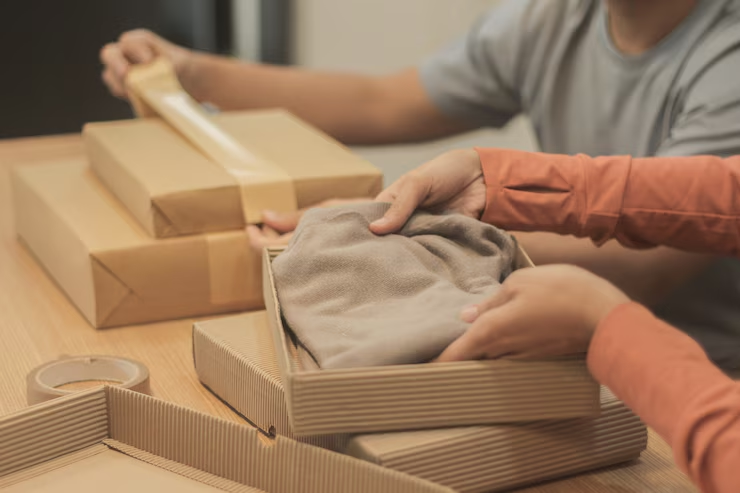
VII. Timelines Overview: How Long Does It All Take?
While fashion production timelines vary based on complexity and supplier location, here’s a general breakdown:
Stage Estimated Time Design & Tech Pack 1–2 weeks Sampling & Fitting 2–4 weeks Sourcing & Pre-Production 1–3 weeks Bulk Manufacturing 2–8 weeks QC & Finishing 1–2 weeks Logistics & Distribution 1–3 weeks In total, a production cycle can take 2 to 4 months—or longer for custom or luxury lines.
Why Timelines Matter: Speed, Cost & Brand Impact
Timely production isn't just about getting products ready—it's a core part of your brand strategy. Delays can lead to missed seasonal launches, excess inventory, or loss of market momentum. Fast production supports trend responsiveness but often increases cost. Meanwhile, longer timelines may lower per-unit costs but require better forecasting and storage capacity. Balancing time and budget is crucial to brand success.
Strategies for Optimizing Production Timelines
To navigate the complexities of clothing production, effective strategies can make all the difference:
· Comprehensive Planning: Create detailed production plans that outline each stage, from design to delivery, to keep the process on track.
· Reliable Partnerships: Collaborate with trusted suppliers and manufacturers to minimize delays and ensure quality.
· Leveraging Technology: Use digital tools like 3D design software or production management platforms to streamline workflows and reduce errors.
· Realistic Deadlines: Set achievable timelines with buffer periods to account for unexpected challenges, such as material shortages or production delays.
· Clear Communication: Maintain open lines of communication with all stakeholders—designers, suppliers, and factories—to ensure smooth handovers and quick problem-solving.
Conclusion
The clothing production process is a fascinating blend of creativity, logistics, and precision, with timelines typically ranging from 6 to 12 months. By understanding each stage—from ideation to distribution—aspiring designers and entrepreneurs can better navigate the complexities of fashion manufacturing. Embracing technology, building strong partnerships, and planning meticulously can streamline the process, helping bring collections to market efficiently. Whether you’re launching a new clothing line, offering made to measure clothes online, or simply curious about the industry, dive into the world of clothing development with confidence, and explore resources or consult professionals to turn your vision into reality.
FAQs
Q1: What is the typical clothing production process from start to finish?
A1: The clothing production process typically includes ideation, technical design, sourcing materials, sample making, bulk manufacturing, quality control, and distribution. Each stage plays a critical role in turning a concept into a market-ready product.Q2: How long does the full clothing production timeline take?
A2: Production timelines can range from 2 to 6 months depending on design complexity, order volume, and supply chain efficiency. Fast fashion may take 4–6 weeks, while luxury or custom pieces may take much longer.Q3: What affects manufacturing timelines in fashion production?
A3: Manufacturing timelines are influenced by fabric availability, factory capacity, the number of SKUs, and production method (e.g., made-to-order vs bulk). Planning ahead and maintaining strong supplier relationships can help prevent delays.MORE 2025-06-17 -
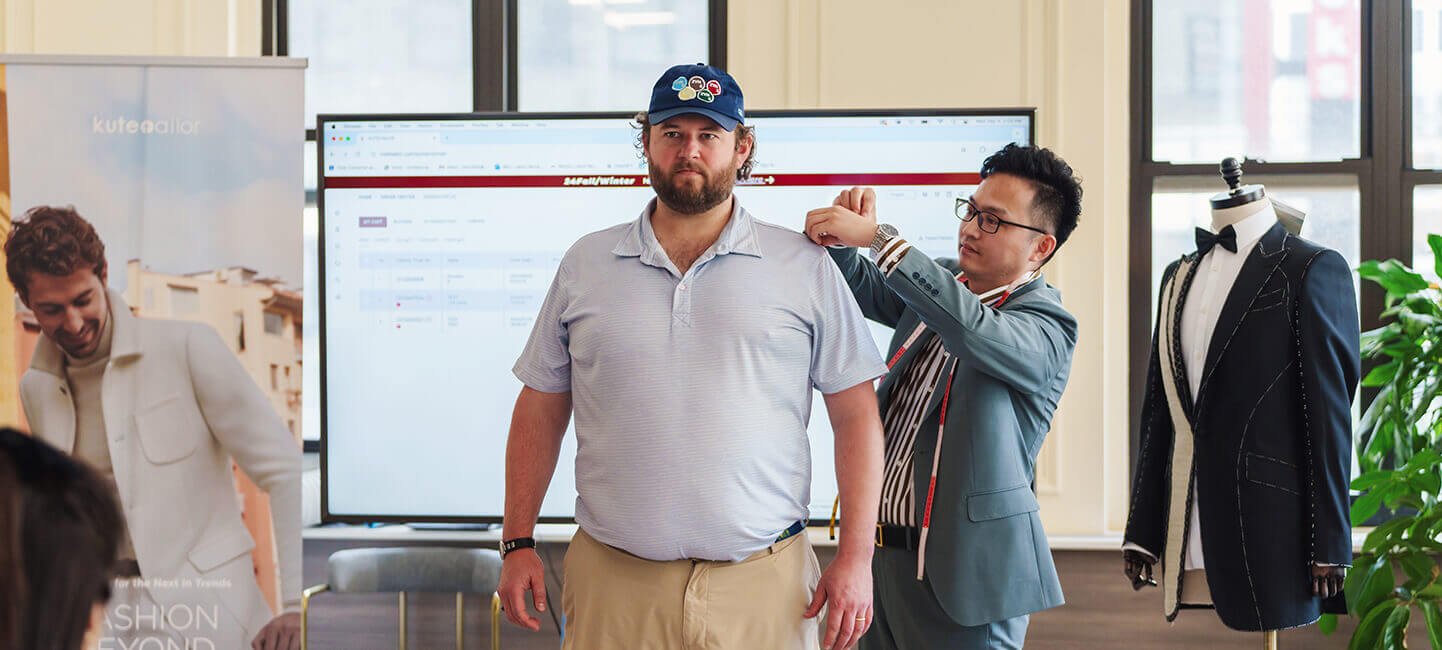 Carbon Footprint in Apparel: How Custom Clothing Can Lower It
Carbon Footprint in Apparel: How Custom Clothing Can Lower ItWhat Is a Carbon Footprint in Apparel?
A fashion carbon footprint refers to the total greenhouse gas (GHG) emissions generated throughout a garment’s lifecycle. This includes emissions from raw material production, textile processing, assembly, transportation, consumer use, and eventual disposal.
In the fashion world, this footprint is substantial. According to the United Nations, the fashion industry carbon emissions account for nearly 10% of global emissions—more than the combined emissions from international flights and maritime shipping.Understanding the carbon footprint in apparel gives consumers and brands a crucial foundation for making more sustainable choices.
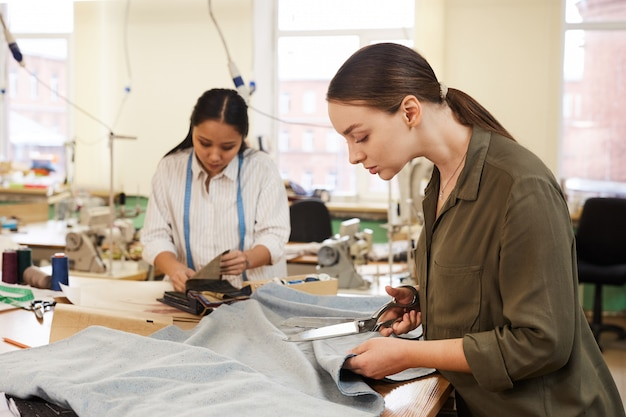
The Main Sources of Carbon Emissions in the Fashion Industry
The fashion industry carbon emissions stem from complex, globalized supply chains. Key sources include:
1. Raw Material Production
- Polyester, derived from fossil fuels, produces high emissions
- Conventional cotton requires large-scale irrigation and pesticide use
2. Textile Manufacturing & Dyeing
- Coal-powered textile mills
- Water- and energy-intensive dyeing and finishing processes
3. Garment Assembly
- Energy use in mass production lines
- Fast turnaround cycles that prioritize speed over sustainability
4. Global Transportation
- Multiple shipping stages across continents
- Frequent use of carbon-heavy air freight
5. Consumer Use
Frequent washing and drying
Poor-quality garments discarded quickly
6. Disposal
Landfills or incineration of unsold or unwanted clothes
Synthetic fibers release GHGs or microplastics over time
At the heart of these issues is the fast fashion carbon footprint, driven by high volumes, low prices, and a culture of disposability.
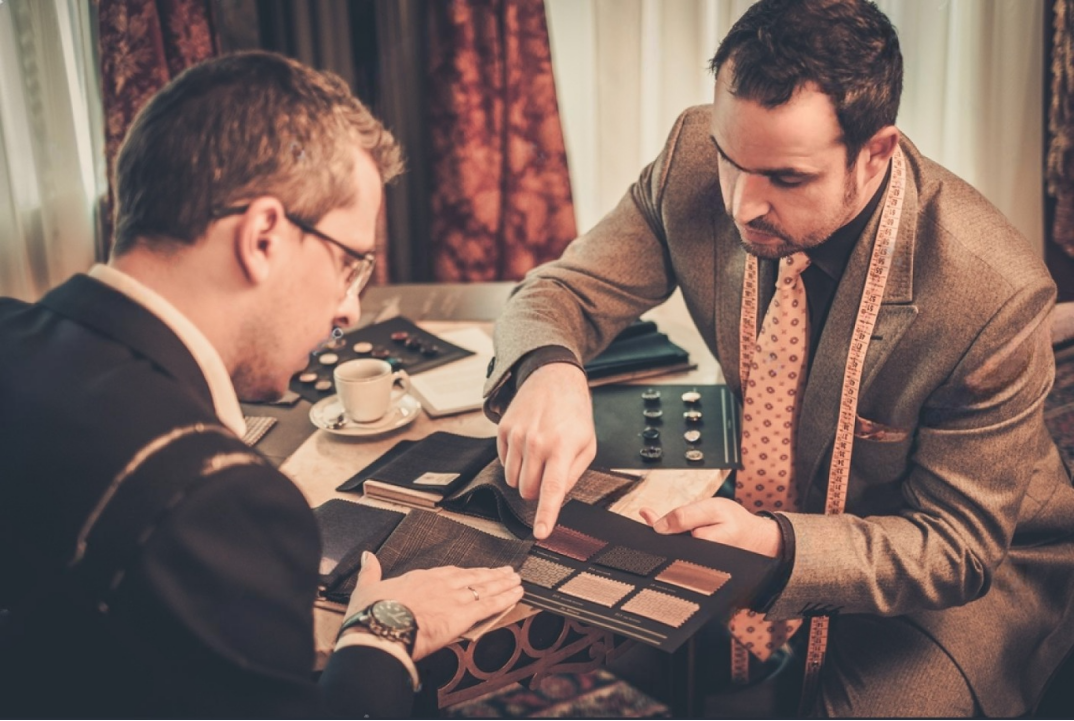
Traditional vs Custom Clothing: A Carbon Footprint Comparison
To understand the environmental advantage of custom clothing, we must compare it to fast fashion—the primary driver of excessive fast fashion carbon emissions.
Factor Traditional Clothing (Mass-Produced) Custom Clothing (Made-to-Order) Production Volume Produced in bulk, often based on sales forecasts Produced only when an order is placed Inventory Waste Overproduction leads to unsold stock, markdowns, or landfill No excess inventory; virtually zero unsold products Material Waste Fabric cutting done at scale, with significant offcuts Patterns optimized for individual pieces; lower waste Sampling Multiple physical samples needed per design Often uses digital 3D design and virtual fitting Transport Emissions Multiple long-haul shipments (raw → mill → factory → warehouse → store) Fewer transportation steps, often local or direct-to-consumer Energy Use High energy consumption for mass production Smaller batches, lower power usage per unit End-of-Life Poor-quality garments discarded quickly Better fit and quality = longer usage life The fast fashion carbon footprint is aggravated by overproduction and long supply chains. In contrast, custom clothing offers leaner, more efficient production with far lower emissions.
How Custom Clothing Reduces Carbon Emissions
Custom clothing makes a measurable difference in lowering the fashion carbon footprint by tackling emissions at multiple stages of the apparel lifecycle. Unlike mass-produced garments, made-to-order clothing reduces waste, energy use, and logistics emissions in ways that fast fashion simply cannot.Here’s how:
On-Demand Production: Eliminate Overproduction Waste
Traditional fashion relies on mass production based on sales forecasts, leading to significant overproduction—over 30% of garments are never sold and often end up in landfills, generating avoidable carbon emissions. In contrast, custom clothing uses on-demand production, creating each piece only after it's ordered. This approach eliminates excess inventory, reduces manufacturing waste, and lowers energy use, making a direct and measurable impact on reducing both textile waste and CO₂ emissions.
Reduced Transportation: Shrinking the Supply ChainFast fashion relies on complex, long-distance supply chains, with materials and production stages spread across multiple countries—resulting in high transportation-related emissions. Custom clothing shortens this chain by using local production and direct-to-consumer shipping, significantly reducing fuel use and lowering the overall carbon footprint of distribution.
Fewer Returns: Better Fit, Lower Emissions
Fast fashion’s high return rates—driven by poor fit and quality—create substantial emissions from extra packaging, shipping, and product waste. Custom clothing, tailored to individual measurements, significantly reduces returns, cutting down on reverse logistics and associated carbon emissions.
Digital Sampling: A Cleaner Design Process
Traditional fashion relies on physical samples throughout the design process, generating waste and emissions from shipping and discarded materials. In contrast, brands offering custom suits online increasingly use digital tools like 3D simulation and virtual try-ons to streamline development, minimize fabric waste, and significantly reduce carbon emissions during the design phase.
Longer Product Lifespan: Wear More, Waste Less
Fast fashion’s poor quality and fit lead to garments being discarded after just a few wears, fueling a throwaway culture and increasing carbon emissions. Custom clothing, with its superior fit, materials, and perceived value, encourages longer use—reducing the need for frequent replacements and significantly lowering the environmental impact over time.
When combined, these five elements of the custom clothing model—on-demand production, localized manufacturing, fewer returns, digital sampling, and longer garment lifespan—offer a compelling, practical solution to counteract the fast fashion carbon emissions crisis.Custom clothing doesn't just represent a fashion trend—it’s a climate-conscious evolution in how clothing is made and consumed.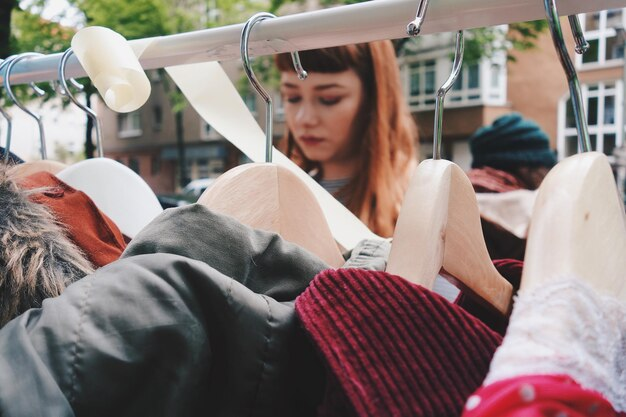
How Custom Clothing Supports Global Sustainability Goals
As global attention turns toward combating climate change, resource depletion, and social inequality, the fashion industry is under pressure to transform. One of the most effective, actionable steps forward is the shift from mass production to custom, on-demand fashion.
Custom clothing doesn’t just reduce the fashion carbon footprint—it also contributes directly to several of the United Nations Sustainable Development Goals (SDGs), which serve as a global blueprint for a more equitable and environmentally secure future.
Here’s how:
SDG 12 – Responsible Consumption and Production
Custom clothing exemplifies this goal by:
- Producing only what is needed—reducing overproduction and landfill waste
- Encouraging consumers to buy less, but better, promoting a longer product lifecycle
- Minimizing fabric waste through precision cutting and digital design
Compared to the waste-heavy fast fashion model, this approach embodies a truly circular and efficient production mindset.
SDG 13 – Climate Action
Fast fashion is a major driver of fashion industry carbon emissions, from energy-intensive manufacturing to long-haul shipping. Custom clothing helps mitigate this by:
- Localizing production and reducing transportation-related emissions
- Lowering the number of returns, which decreases reverse logistics
- Using sustainable materials and low-impact digital design tools
In doing so, it actively contributes to slowing global warming and meeting national carbon reduction targets.
SDG 8 – Decent Work and Economic Growth
Custom fashion often involves small-batch production, local workshops, or independent artisans. This fosters:
- Job creation in local economies
- Skill preservation in tailoring and garment design
- Fair wages and ethical labor conditions, as production is often easier to monitor and scale responsibly
Rather than relying on anonymous overseas factories, custom clothing celebrates and empowers the people who make it.
SDG 9 – Industry, Innovation and Infrastructure
The rise of custom clothing is deeply tied to technological innovation in fashion:
- 3D virtual fitting rooms
- AI-powered body scanning
- Digital product development tools
- Smart order management systems
These technologies reduce material usage and energy consumption during development, while also streamlining the production pipeline—making fashion smarter, cleaner, and faster.
SDG 17 – Partnerships for the Goals
Sustainable custom fashion thrives on collaboration. Many brands work with:
- Eco-certified fabric producers
- Local makers or co-ops
- Logistics providers offering low-emission shipping
- NGOs and educational platforms promoting ethical fashion
These partnerships create a global network of shared accountability and environmental responsibility.
From Fit to Global Impact
At first glance, custom clothing might seem like a personal luxury—but its ripple effects are global. When implemented at scale, the custom model contributes not just to fashion innovation but to real, measurable progress on the world’s most critical environmental and social goals.
It’s a model that turns every purchase into a purposeful act—one that aligns personal style with planetary responsibility.
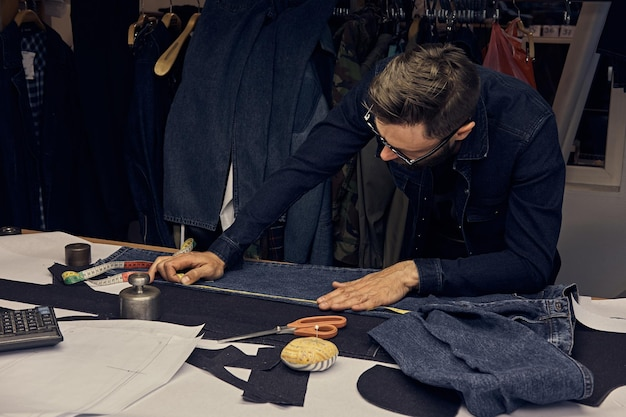
Who Benefits from Low-Carbon Custom Apparel?
Eco-Conscious Consumers
Make sustainable, ethical wardrobe choices. Custom clothing allows them to buy less but better, reducing their personal fashion carbon footprint while supporting transparent, responsible brands.Independent Designers
Avoid mass inventory and create purposefully. The custom model empowers them to focus on quality, creativity, and client connection—without the pressure of overproduction or waste.Brands & Retailers
Cut carbon footprint, reduce returns, and build loyalty. By shifting to made-to-order, brands can meet sustainability expectations while enhancing customer satisfaction and reducing operational risk.Local Manufacturers
Gain opportunities from nearshoring and growing demand for craftsmanship. As brands shift away from overseas mass production, custom apparel suppliers, including local workshops and skilled artisans, are being revalued and revitalized. This shift not only supports regional economies but also enables faster turnaround, lower emissions, and greater transparency in the supply chain.Corporate Buyers
Align custom uniforms with ESG goals. Custom-fit, low-impact uniforms help companies meet sustainability targets, improve employee experience, and strengthen their ethical brand image.In an era where environmental impact matters, low-carbon custom apparel creates value for all—enabling a fashion system that is not only more efficient, but also more human and future-ready.

Conclusion: A Smarter Way to Sustainable Fashion
Low-carbon custom apparel offers a practical path to reducing the fashion industry’s environmental impact. From cutting overproduction to minimizing returns and transport emissions, it redefines how clothing is made and consumed.
Brands like Kutetailor are leading this shift. By combining on-demand production with smart manufacturing and digital fitting, Kutetailor reduces waste while delivering high-quality garments quickly and efficiently. Their model proves that custom fashion can be both scalable and sustainable.
In a world demanding better from fashion, custom clothing is no longer a luxury—it’s a smarter, cleaner, and more responsible way forward.
MORE 2025-06-16

